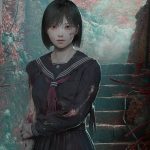Best Hidden Gems On The Original Game Boy
Description

Summary
- Kid Dracula is a clever, cute spin-off of Castlevania with unique gameplay elements.
- Avenging Spirit stands out with its possession mechanic, tragic story, and impressive visuals.
- Sword of Hope 2 offers a mix of RPG and point-and-click genres with a confident atmosphere.
It’s easy to think of the Game Boy as a Pokemon machine or a Tetris box, and for a lot of kids in the ’90s, it probably was. But beneath all the block-dropping and Pikachu-chasing were titles that dared to be strange, clever, or just wildly ahead of their time. The kind of games that didn’t get the spotlight back then, but feel like buried treasure now. These are the ones that didn’t sell millions but absolutely deserved to.
Whether they played with genre conventions, squeezed magic out of limited hardware, or just offered something no other handheld could, these hidden gems made the most out of grayscale pixels and two buttons.
Kid Dracula
Castlevania But Make It Cute
Konami knew how to make the Game Boy sweat, and Kid Dracula is a perfect example. A spin-off of the Castlevania series in everything but tone, it takes the gothic trappings of its parent franchise and shoves them through a cartoon filter. What comes out the other end is a platformer that’s snappy, stylish, and weird in all the right ways.
Players take control of Dracula’s pint-sized son, who’s got a repertoire of spells and transformations instead of just a whip. Each stage introduces new mechanics or enemies without ever feeling like filler. And while it starts easy, the difficulty slowly creeps up with boss fights that feel surprisingly tactical. There’s even a level with a trivia minigame, because why not? Kid Dracula never got the mainstream love Metroid or Mega Man did, but anyone who found it back then knew they had something special. It’s goofy. It’s sharp. And it deserves more than being a footnote in Konami’s history.
Avenging Spirit
A Ghost, A Gun, And A Second Chance
Everything about Avenging Spirit feels like it came from a bizarro universe. It’s a side-scrolling shooter where the protagonist is already dead. Players start as a ghost, and the gimmick is possession; players can take over the bodies of gangsters, ninjas, robots, and even a mob boss’s pet scientist. Each body has its own weapons and playstyle, and some are vital for reaching secret paths or bonus items.
What makes it a gem is how confident it is in its weirdness. The story doesn’t pull punches either; it’s tragic from the jump, but still commits to full-on arcade action. And for a handheld title, it looks shockingly good, with big expressive sprites and smooth animation. It’s one of those rare Game Boy games that could pass for something from the Neo Geo Pocket if not for the green-tinted screen. Nobody expected Avenging Spirit to be this ambitious. That’s probably why it flew under the radar.
Sword Of Hope 2
When JRPGs Met Point-And-Click
On paper, Sword of Hope 2 sounds like a standard RPG. There’s a prince, a kingdom, and some mysterious evil threatening the land. But once it boots up, it plays more like a first-person dungeon crawler with heavy visual novel energy. It’s got that Shadowgate vibe, where players explore rooms, solve puzzles, and manage an inventory, all through a series of text-based commands and menu navigation.
What makes it so interesting isn’t just the genre fusion, but how confident it is. There’s a full save system, NPCs with branching dialogue, and item-based progression that requires actual logic rather than brute force. It’s slower than traditional RPGs, but richer in atmosphere. And while the story might start simple, it takes enough turns to keep players on their toes. Most people skipped over it back in the day, assuming it was just another RPG knockoff, but those who stuck with it found something quietly memorable.
Daedalian Opus
Tetris For People Who Like To Cry
- Platforms: Game Boy, MSX
- Released: April 20, 1990
- Developer: Tokai Communications
- Genre: Puzzle, Strategy
This one looks like a Tetris clone at first glance. Blocks fall. Players fit them into a shape. But Daedalian Opus is actually closer to pure puzzle torture. Each level gives players a shape and a specific set of tetromino-style blocks. Your job? Fit all of them into that shape perfectly. No rotation during placement. No margin for error. Just raw brain power and a lot of quiet swearing.
What’s wild is how Daedalian Opus escalates. Early puzzles are chill, even soothing. By the halfway point, it feels like trying to pack a suitcase using nothing but bricks and rage. But that’s also why it sticks. It turns Tetris into something methodical, deliberate, and maddeningly satisfying when everything finally clicks. The game has zero frills, no story, and barely any music, but it doesn’t need them. It’s one of the most quietly punishing and rewarding experiences on the entire system.
Catrap
Before Rewind Buttons, There Was This
- Platforms: Game Boy
- Released: June 1, 1990
- Developer: ASK Kodansha, Kodansha
- Genre: Puzzle, Platformer
In 1990, Catrap introduced a mechanic so far ahead of its time that people didn’t realize how brilliant it was until decades later: undoing your moves. Players control two adorable characters trapped in block-pushing puzzles filled with ladders, enemies, and one very important rule: get stuck, and you’re restarting. Unless fans hit rewind, which lets players scroll back through every action they’ve taken in the level like a VHS tape.
Aside from being ridiculously cute, Catrap is genuinely challenging. Each level ramps up in complexity, and because players swap between two characters to clear the stage together, it quickly becomes a kind of mental gymnastics. And the ability to rewind? That wasn’t just a gimmick. It gave Catrap the freedom to throw complex puzzles at the player without feeling unfair. It’s no wonder the game found a second life decades later on the 3DS Virtual Console, where people finally gave it the attention it always deserved.
Mole Mania
Miyamoto’s Other Baby Deserves More Love
There’s no reason Mole Mania should have been forgotten. It had Shigeru Miyamoto’s fingerprints all over it, and yet somehow ended up buried under the Game Boy’s mountain of licensed shovelware. Players control Muddy Mole, whose family has been kidnapped by a vegetable baron (yes, really). What follows is a surprisingly brainy puzzle adventure that asks players to push, pull, and dig their way through maze-like stages without softlocking themselves.
The digging mechanic is deceptively deep. Muddy can tunnel underground to bypass obstacles, but that changes the layout of the aboveground puzzle, forcing players to think in two layers at once. And unlike many early puzzle games, Mole Mania doesn’t rely on trial-and-error; it trusts the player to pay attention and learn its logic. It’s a game that feels closer to something like Zelda than anything else on the system, just with fewer swords and more cabbages.
Trip World
The Best Platformer You Never Knew You Wanted To Pet
Before Trip World became a cult collectible with absurd price tags on auction sites, it quietly released in Europe and Japan with little fanfare. Which is a shame, because Sunsoft poured more charm into this than most console platformers were managing at the time. Players take control of Yakopoo, a strange rabbit-like creature that can shapeshift mid-jump, swim, fly, and even kick enemies with its tail. And somehow, none of that ever feels overwhelming.
What makes Trip World feel special is how peaceful it can be. Unlike most platformers of the era, enemies don’t always attack on sight. Many just walk around, adding to the odd sense of tranquility. The game’s environments are lush and dreamlike, and the spritework feels almost illegal for a 1993 handheld. It’s short, for sure, but so carefully designed that it practically begs to be replayed, if not for its mechanics, then just to vibe with its world again.




